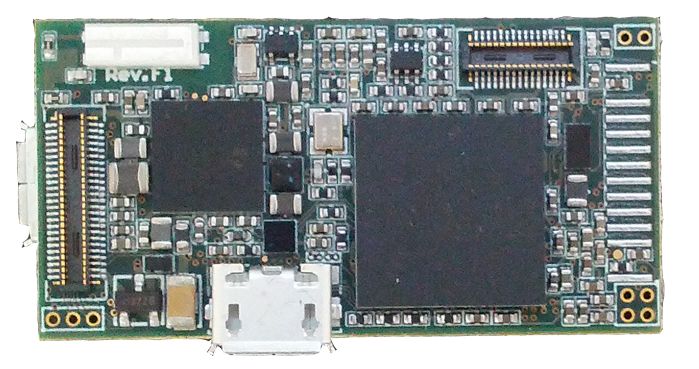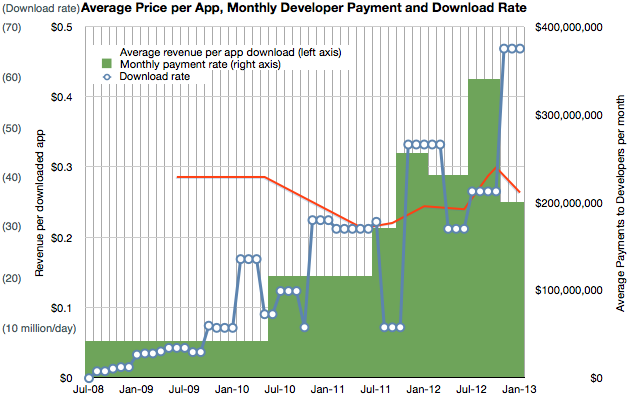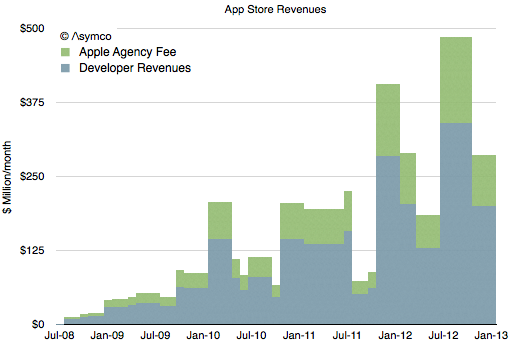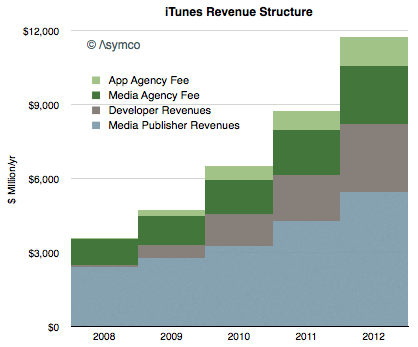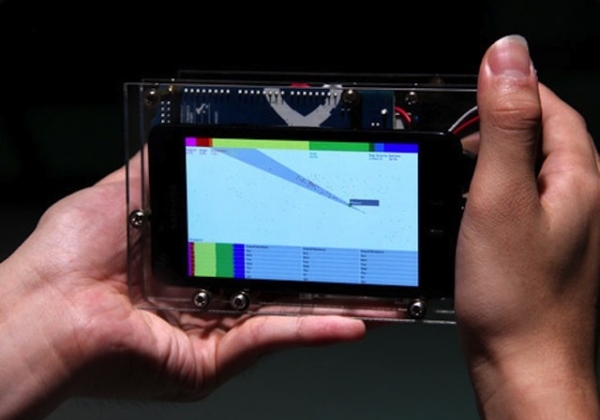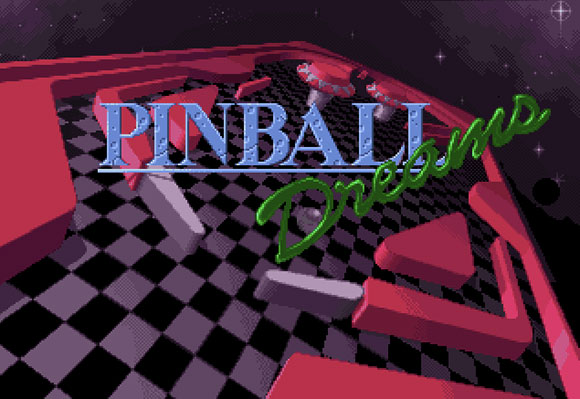Via Smashing Magazine
-----
At Velocity 2011, Nicole Sullivan and I introduced CSS Lint,
the first code-quality tool for CSS. We had spent the previous two
weeks coding like crazy, trying to create an application that was both
useful for end users and easy to modify. Neither of us had any
experience launching an open-source project like this, and we learned a
lot through the process.
After some initial missteps, the project finally hit a groove, and it
now regularly get compliments from people using and contributing to CSS
Lint. It’s actually not that hard to create a successful open-source
project when you stop to think about your goals.
(
Smashing’s note: Subscribe to the
Smashing eBook Library and get
immediate unlimited access
to all Smashing eBooks, released in the past and in the future,
including digital versions of our printed books. At least 24 quality
eBooks a year, 60 eBooks during the first year.
Subscribe today!)
What Are Your Goals?
These days, it seems that anybody who writes a piece of code ends up
pushing it to GitHub with an open-source license and says, “I’ve
open-sourced it.” Creating an open-source project isn’t just about
making your code freely available to others. So, before announcing to
the world that you have open-sourced something that hasn’t been used by
anyone other than you in your spare time, stop to ask yourself what your
goals are for the project.
The first goal is always to create something useful.
For CSS Lint, our goal was to create an extensible tool for CSS code
quality that could easily fit into a developer’s workflow, whether the
workflow is automated or not. Make sure that what you’re offering is
useful by looking for others who are doing similar projects and figuring
out how large of a user base you’re looking at.
After that, decide why you are open-sourcing the project in the first
place. Is it because you just want to share what you’ve done? Do you
intend to continue developing the code, or is this just
a snapshot that you’re putting out into the world? If you have no
intention of continuing to develop the code, then the rest of this
article doesn’t apply to you. Make sure that the readme file in your
repository states this clearly so that anyone who finds your project
isn’t confused.
If you are going to continue developing the code, do you want to accept contributions
from others? If not, then, once again, this article doesn’t apply to
you. If yes, then you have some work to do. Creating an open-source
project that’s conducive to outside contributions is more work than it
seems. You have to create environments in which those who are unfamiliar
with the project can get up to speed and be productive reasonably
quickly, and that takes some planning.
This article is about starting an open-source project with these goals:
- Create something useful for the world.
- Continue to develop the code for the foreseeable future.
- Accept outside contributions.
Choosing A License
Before you share your code, the most important decision to make is
what license to apply. The open-source license that you choose could
greatly help or hurt your chances of attracting contributors. All
licenses allow you to retain the copyright of the code you produce.
While the concept of licensing is quite complex, there are a few common
licenses and a few basic things you should know about each. (If you are
open-sourcing a project on behalf of a company, please speak to your
legal counsel before choosing a license.)
- GPL
The GNU Public License was created for the GNU project and has been
credited with the rise of Linux as a viable operating system. The GPL
license requires that any project using a GPL-licensed component must
also be made available under the GPL. To put it simply, any project
using a GPL-licensed component in any way must also be open-sourced
under the GPL. There is no restriction on the use of GPL-licensed
applications; the restriction only has to do with the modification and
distribution of derived works.
- LGPL
The Lesser GPL is a slightly more permissive version of GPL. An
LGPL-licensed component may be linked to from an application without the
application itself needing to be open-sourced under GPL or LGPL. In all
other ways, LGPL is the same as GPL, so any derived works must also be
open-sourced under GPL or LGPL.
- MIT
Also called X11, this licence is permissive, allowing for the use and
redistribution of code so long as the license and copyright are included
along with it. MIT-licensed code may be included in proprietary code
without any additional restrictions. Additionally, MIT-licensed code is
GPL-compatible and can be combined with such code to create new
GPL-licensed applications.
- BSD3
This is also a permissive license that allows for the use and
redistribution of code as long as the license and copyright are included
with it. In addition, any redistribution of the code in binary form
must include a license and copyright in its available documentation. The
clause that sets BSD3 apart from MIT is the prohibition of using the
copyright holder’s name to promote a product that uses the code. For
example, if I wrote some code and licensed it under BSD3, then an
application that uses that code couldn’t use my name to promote the
product without my permission. BSD3-licensed code is also compatible
with GPL.
There are many other open-source licenses, but these tend to be the most commonly discussed and used.
One thing to keep in mind is that Creative Commons licenses are not
designed to be used with software. All of the Creative Commons licenses
are intended for “creative work,” including audio, images, video and
text. The Creative Commons organization itself recommends
not using Creative Commons licenses for software and instead to use
licenses that have been specifically formulated to cover software, as is
the case with the four options discussed above.
So, which license should you choose? It largely
depends on how you intend your code to be used. Because LGPL, MIT and
BSD3 are all compatible with GPL, that’s not a major concern. If you
want any modified versions of your code to be used only in open-source
software, then GPL is the way to go. If your code is designed to be a
standalone component that may be included in other applications without
modification, then you might want to consider LGPL. Otherwise, the MIT
or BSD3 licenses are popular choices. Individuals tend to favor the MIT
license, while businesses tend to favor BSD3 to ensure that their
company name can’t be used without permission.
To help you decide, look at how some popular open-source projects are licensed:
Another option is to release your code into the public domain.
Public-domain code has no copyright owner and may be used in absolutely
any way. If you have no intention of maintaining control over your code
or you just want to share your code with the world and not continue to
develop it, then consider releasing it into the public domain.
To learn more about licenses, their associated legal issues and how licensing actually works, please read David Bushell’s “Understanding Copyright and Licenses.”
Code Organization
After deciding how to license your open-source project, it’s almost
time to push your code out into the world. But before doing that, look
at how the code is organized. Not all code invites contributions.
If a potential contributor can’t figure out how to read through the
code, then it’s highly unlikely any contribution will emerge. The way
you lay out the code, in terms of file and directory structure as well
as coding style, is a key aspect to consider before sharing it publicly.
Don’t just throw out whatever code you have been writing into the wild;
spend some time figuring out how others will view your code and what
questions they might have.
For CSS Lint, we decided on a basic top-level directory structure of src for source code, lib for external dependencies, and tests for all test code. The src directory is further subdivided into directories that group together related files. All CSS Lint rules are in the rules subdirectory; all output formatters are in the formatters directory; etc. The tests directory is split up into the same subdirectories as src,
thereby indicating the relationship between the test code and the
source code. Over time, we’ve added top-level directories as needed, but
the same basic structure has been in place since the beginning.
Documentation
One of the biggest complaints about open-source projects is the lack
of documentation. Documentation isn’t as fun or exciting as writing
executable code, but it is critical to the success of an open-source
project. The best way to discourage use of and contributions to your
software is to have no documentation. This was an early mistake we made
with CSS Lint. When the project launched, we had no documentation, and
everyone was confused about how to use it. Don’t make the same mistake:
get some documentation ready before pushing the project live.
The documentation should be easy to update and shouldn’t require a
code push, because it will need to be changed very quickly in response
to user feedback. This means that the best place for documentation isn’t
in the same repository as the code. If your code is hosted on GitHub,
then make use of the built-in wiki for each project. All of the CSS Lint documentation
is in a GitHub wiki. If your code is hosted elsewhere, consider setting
up your own wiki or a similar system that enables you to update the
documentation in real time. A good documentation system must be easy to
update, or else you will never update it.
End-User Documentation
Whether you’re creating a command-line program, an application
framework, a utility library or anything else, keep the end user in
mind. The end user is not the person who will be modifying the code;
it’s the one who will be using the code. People were initially confused
about CSS Lint’s purpose and how to use it effectively because of the
lack of documentation. Your project will never gain contributors without
first gaining end users. Satisfied end users are the ones who will end
up becoming contributors because they see the value in what you’ve
created.
Developer Guide
Even if you’ve laid out the code in a logical manner and have decent
end-user documentation, contributions are not guaranteed to start
flowing. You’ll need a developer guide to help get contributors up and
running as quickly as possible. A good developer guide covers the
following:
- How to get the source code
Yes, you would hope that contributors would be familiar with how to
check out and clone a repository, but that’s not always the case. A
gentle introduction to getting the source code is always appreciated.
- How the code is laid out
Even though the code and directory structures should be fairly
self-explanatory, writing down a description for posterity always helps.
- How to set up the build system
If you are using a build system, then you’ll need to include
instructions on how to set it up. These instructions should include
where to get build-time dependencies that aren’t already included in the
repository.
- How to run a build
These are the steps necessary to run a development build and to execute unit tests.
- How to contribute
Spell out the criteria for contributing to the project. If you require
unit tests, then state that. If you require documentation, mention that
as well. Give people a checklist of things to go over before submitting a
contribution.
I spent a lot of time refining the “CSS Lint Developer Guide”
based on conversations I had had with contributors and questions that
others would ask. As with all documentation, the developer guide should
be a living document that continues to grow as the project grows.
Use A Mailing List
All good open-source projects give people a place to go to ask
questions, and the easiest way to achieve that is by setting up a
mailing list. When we first launched CSS Lint, Nicole and I were
inundated with questions. The problem is that those questions were
coming in through many different channels. People were asking questions
on Twitter as well as emailing each of us directly. That’s exactly the
situation you don’t want.
Setting up a mailing list with Yahoo Groups or Google Groups
is easy and free. Make sure to do that before announcing the project’s
availability, and actively encourage people to use the mailing list to
ask questions. Link to the mailing list prominently on the website (if
you have one) or in the documentation.
The other important part of running a mailing list is to actively
monitor it. Nothing is more frustrating for end users or contributors
than being ignored. If you’ve set up a mailing list, take the time to
monitor it and respond to people who ask questions.
This is the best way to foster a community of developers around the
project. Getting a decent amount of traffic onto the mailing list can
take some time, but it’s worth the effort. Offer advice to people who
want to contribute; suggest to people to file tickets when appropriate
(don’t let the mailing list turn into a bug tracker!); and use the
feedback you get from the mailing list to improve documentation.
Use Version Numbers
One common mistake made with open-source projects is neglecting to
use version numbers. Version numbers are incredibly important for the
long-term stability and maintenance of your project. CSS Lint didn’t use
version numbers when it was first released, and I quickly realized the
mistake. When bugs came in, I had no idea whether people were using the
most recent version because there was no way for them to tell when the
code was released. Bugs were being reported that had already been fixed,
but there was no way for the end user to figure that out.
Stamping each release with an official version number puts a stake in
the ground. When somebody files a bug, you can ask what version they
are using and then check whether that bug has already been fixed. This
greatly reduced the amount of time I spent with bug reports because I
was able to quickly determine whether someone was using the most recent
version.
Unless your project has been previously used and vetted, start the
version number at 0.1.0 and go up incrementally with each release. With
CSS Lint, we increased the second number for planned releases; so, 0.2.0
was the second planned release, 0.3.0 was the third and so on. If we
needed to release a version in between planned releases in order to fix
bugs, then we increased the third number. So, the second unplanned
release after 0.2.0 was 0.2.2. Don’t get me wrong: there are no set
rules on how to increase version numbers in a project, though there are a
couple of resources worth looking at: Apache APR Versioning and Semantic Versioning. Just pick something and stick with it.
In addition to helping with tracking, version numbers do a number of other great things for your project.
Tag Versions in Source Control
When you decide on a new release, use a source-control tag to mark
the state of the code for that release. I started doing this for CSS
Lint as soon as we started using version numbers. I didn’t think much of
it until the first time I forgot to tag a release and a bug was filed
by someone looking for that tag. It turns out that developers like to
check out particular versions of code.
Tie the tag obviously to the version number by including the version
number directly in the tag’s name. With CSS Lint, our tags are in the
format of “v0.9.9.” This will make it very easy for anyone looking
through tags to figure out what those tags mean — including you, because
you’ll be able to better keep track of what changes have been made in
each release.
Change Logs
Another benefit of versioning is in producing change logs. Change
logs are important for communicating version differences to both end
users and contributors. The added benefit of tagging versions and source
control is that you can automatically generate change logs based on
those tags. CSS Lint’s build system automatically creates a change log
for each release that includes not just the commit message but also the
contributor. In this way, the change log becomes a record not only of
code changes, but also of contributions from the community.
Availability Announcements
Whenever a new version of the project is available, announce its
availability somewhere. Whether you do this on a blog or on the mailing
list (or in both places), formally announcing that a new version is
available is very important. The announcement should include any major
changes made in the code, as well as who has contributed those changes.
Contributors tend to contribute more if they get some recognition for
their work, so reward the people who have taken the time to contribute
to your project by acknowledging their contribution.
Managing Contributions
Once you have everything set up, the next step is to figure out how
you will accept contributions. Your contribution model can be as
informal or formal as you’d like, depending on your goals. For a
personal project, you might not have any formal contribution process.
The developer guide would lay out what is necessary in order for the
code to be merged into the repository and would state that as long as a
submission follows that format, then the contribution will be accepted.
For a larger project, you might want to have a more formal policy.
The first thing to look into is whether you will require a
contributor license agreement (CLA). CLAs are used in many large
open-source projects to protect the legal rights of the project. Every
person who submits code to the project would need to fill out a CLA
certifying that any contributed code is original work and that the
copyright for that work is being turned over to the project. CLAs also
give the project owner license to use the contribution as part of the
project, and it warrants that the contributor isn’t knowingly including
code to which someone else has a copyright, patent or other right. jQuery, YUI and Dojo
all require CLAs for code submissions. If you are considering requiring
a CLA from contributors, then getting legal advice regarding it and
your licensing structure would be worthwhile.
Next, you may want to establish a hierarchy of people working on the
project. Open-source projects typically have three primary designations:
- Contributor
Anyone who has had source code merged into the repository is considered a
contributor. The contributor cannot access the repository directly but
has submitted patches that have been accepted.
- Committer
People who have direct access to the repository are committers. These
people work on features and fix bugs regularly, and they submit code
directly to the repository.
- Reviewer
The highest level of contributor, reviewers are commanders who also have
directional impact on the project. Reviewers fulfill their title by
reviewing submissions from contributors and committers, approving or
denying patches, promoting or demoting committers, and generally running
the project.
If you’re going to have a formal hierarchy such as this, you’ll need
to draft a document that describes the role of each type of contributor
and how one may be promoted through the ranks. YUI has just created a
formal “Contributor Model,” along with excellent documentation on roles and responsibilities.
At the moment, CSS Lint doesn’t require a CLA and doesn’t have a
formal contribution model in place, but everyone should consider it as
their open-source project grows.
The Proof
It probably took us about six months from its initial release to get
CSS Lint to the point of being a fully functioning open-source project.
Since then, over a dozen contributors have submitted code that is now
included in the project. While that number might seem small by the
standard of a large open-source project, we take great pride in it.
Getting one external contribution is easy; getting contributions over an
extended period of time is difficult.
And we know that we’ve been doing something right because of the
feedback we receive. Jonathan Klein recently took to the mailing list to
ask some questions and ended up submitting a pull request that was
accepted into the project. He then emailed me this feedback:
I just wanted to say that I think CSS Lint is a model open-source
project — great documentation, easy to extend, clean code, fast replies
on the mailing list and to pull requests, and easily customizable to fit
any environment. Starting to do development on CSS Lint was as easy as
reading a couple of wiki pages, and the fact that you explicitly called
out the typical workflow of a change made the barrier to entry extremely
low. I wish more open-source projects would follow suit and make it
easy to contribute.
Getting emails like this has become commonplace for CSS Lint, and it
can become the norm for your project, too, if you take the time to set
up a sustainable eco-system. We all want our projects to succeed, and we
want people to want to contribute to them. As Jonathan said, make the
barrier to entry as low as possible and developers will find ways to
help out.



